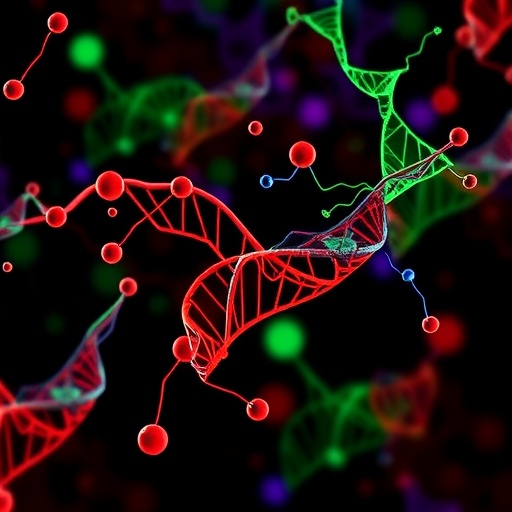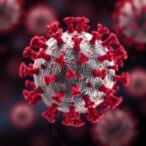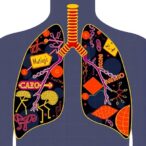
In the intricate landscape of acute leukemias, recent advances highlight a compelling intersection of cell metabolism and epigenetics, with polyamines emerging as pivotal molecular players. These small, positively charged molecules, including putrescine, spermidine, and spermine, orchestrate a variety of cellular processes that ultimately influence leukemia progression and treatment resistance. Beyond their traditional metabolic roles, polyamines intricately regulate the cell cycle, apoptotic pathways, and epigenetic modifications, establishing themselves as critical mediators in the biology of these aggressive hematological malignancies.
Fundamentally, polyamines promote cell cycle progression by modulating the expression and activity of cyclins and cyclin-dependent kinases (CDKs). Evidence from both solid tumors and hematological malignancies indicates that polyamine biosynthesis enzyme ornithine decarboxylase (ODC) supports the transition from G1 to S phase by upregulating cyclins A, D, and E, alongside CDK4. In HL-60 leukemia cells, ODC overexpression was found to overcome chemotherapeutic-induced cell cycle arrest typically observed in G1 or G2/M phases, effectively pushing cells to proliferate despite cytotoxic stress. Conversely, restriction of polyamines in T-cell acute lymphoblastic leukemia (T-ALL) models induces G1 arrest by upregulating CDK inhibitors CDKN1A and CDKN1B, a process mediated by tumor suppressor protein p53. These observations underscore a dual capacity for polyamines to both fuel leukemic cell proliferation and modulate cell cycle checkpoints in response to stress.
Polyamines also confer a protective advantage against cell death mechanisms. In vitro experiments have shown that supplementation with putrescine or enforced ODC expression can reverse apoptosis triggered by chemotherapy in HL-60 cells. The protective effect involves suppression of pro-apoptotic signals like cytochrome c release and reactive oxygen species (ROS) generation, as well as maintenance of mitochondrial membrane potential and preservation of anti-apoptotic protein BCL-2 levels. Such data suggest that polyamine metabolism not only affects cell cycle kinetics but also buffers leukemic cells from lethal insults, potentially contributing to chemoresistance.
.adsslot_amo4Kx9Bu2{width:728px !important;height:90px !important;}
@media(max-width:1199px){ .adsslot_amo4Kx9Bu2{width:468px !important;height:60px !important;}
}
@media(max-width:767px){ .adsslot_amo4Kx9Bu2{width:320px !important;height:50px !important;}
}
ADVERTISEMENT
One of the most fascinating biochemical roles of polyamines lies in the post-translational modification known as hypusination, uniquely affecting the eukaryotic translation initiation factor 5A (eIF5A). This two-step enzymatic process converts a specific lysine residue into hypusine, with the intermediate deoxyhypusine formed by deoxyhypusine synthase (DHS) and subsequently hydroxylated by deoxyhypusine hydroxylase (DOHH). Spermidine provides the essential aminobutyl group for this modification, directly linking polyamine metabolism to hypusination. Hypusinated eIF5A acts as a critical facilitator of translation elongation and has been implicated in cancer cell survival and drug resistance, especially in acute myeloid leukemia (AML) and acute lymphoblastic leukemia (ALL). Inhibition of hypusination sensitizes leukemic cells to chemotherapeutic agents such as daunorubicin and vincristine, further underscoring its therapeutic potential.
Beyond translation regulation, spermidine is a notable inducer of autophagy, a cellular recycling process essential for maintaining homeostasis under metabolic stress. Spermidine influences autophagy by decreasing acetyl-CoA levels, a metabolite known to inhibit autophagic flux, via its conversion into acetylated polyamines and by activating histone acetyltransferases (HATs). Moreover, spermidine promotes the selective translation of transcription factors like TFEB through hypusinated eIF5A, which then orchestrates lysosomal biogenesis and autophagy gene expression. In AML, repression of TFEB by the oncogene MYC can inhibit autophagic tumor suppressor pathways, linking polyamine metabolism to the regulation of leukemic blast differentiation and death through epigenetic mechanisms involving DNA demethylation mediated by the IDH1/IDH2-TET2 axis.
Histone deacetylase 10 (HDAC10) has emerged as a modulator of autophagy by catalyzing the hydrolysis of N8-acetylspermidine back to spermidine, maintaining intracellular polyamine pools. In certain malignancies, including colon cancer and cervical carcinoma, this enzymatic activity sustains cell growth under conditions of polyamine restriction. Intriguingly, HDAC10 also contributes to therapy resistance in AML models harboring internal tandem duplications in the FLT3 gene (FLT3-ITD), a mutation associated with poor prognosis. Combined pharmacological inhibition of HDAC10 and FLT3 demonstrates synergistic effects on reducing leukemic cell viability, hinting at a potential axis where polyamine metabolism intersects with autophagy and signal transduction in resistant leukemia phenotypes.
At the nexus of metabolic signaling, polyamines influence protein phosphorylation events by virtue of their electrostatic interaction with nucleotide triphosphates such as ATP and GTP. This interaction enables the regulation of receptor tyrosine kinases, including insulin receptor isoform A and insulin-like growth factor 1 receptor (IGF1R), both abundantly expressed in more than 80% of AML cases. These receptors activate downstream pathways, notably AKT and MEK1/2, fostering leukemic cell survival under nutrient-limited conditions. Recent studies describe an AML-associated insulin-resistant metabolic state characterized by decreased circulating insulin and increased glucose availability, orchestrated by leukemia-induced secretion of insulin-like growth factor binding protein 1 (IGFBP1) from adipose tissue and modulated by gut microbiota metabolites. Polyamines may modulate these signaling axes, reflecting a complex interplay between metabolism and leukemic cell adaptability.
In addition to insulin signaling, polyamines regulate pathways tied to steroid hormone receptors and growth factor receptors. Experimental evidence demonstrates that ODC inhibition diminishes estrogen receptor (ER) expression and activity in breast cancer cells, implicating polyamines in modulating tyrosine phosphorylation of critical adaptor proteins such as Shc. Similarly, androgen receptor (AR) activation is suppressed following ODC silencing in prostate cancer models dependent on androgen signaling. These observations suggest that polyamine metabolism may broadly influence receptor-mediated signal transduction, not only in solid tumors but potentially in leukemias where such pathways are aberrantly activated.
The oxidative metabolism of polyamines contributes to cellular stress responses through the generation of potentially toxic byproducts, including aldehydes and hydrogen peroxide (H2O2). These oxidative metabolites activate the nuclear factor erythroid 2-related factor 2 (NRF2) pathway, which in turn upregulates an array of detoxifying enzymes, such as glutathione S-transferases (GSTA1 and GSTM1), NAD(P)H quinone dehydrogenase 1 (NQO1), and UDP glucuronosyltransferase family 1 member A6 (UGT1A6). In AML, activation of NRF2 and its downstream targets is not only driven by oxidative stress but is also enhanced by mutations in DNA methyltransferase 3A (DNMT3A), particularly the R882H variant. This mutation impairs both DNA methylation efficiency and target specificity, potentially linking epigenetic dysregulation with altered polyamine metabolism and redox homeostasis.
Therapeutically, modulation of the NRF2 pathway is of significant interest. Venetoclax combined with hypomethylating agents (HMAs) reverses decitabine-induced NRF2 nuclear translocation and reduces antioxidant enzyme expression in AML, enhancing anti-leukemic efficacy. In pediatric B-cell ALL, elevated NRF2 expression correlates with chemoresistance, influencing sensitivity to vincristine. These findings posit that polyamine-driven redox regulation has profound implications for treatment response and resistance mechanisms in acute leukemias.
Polyamine catabolic enzymes spermine oxidase (SMOX) and polyamine oxidase (PAOX) generate hydrogen peroxide during the degradation of polyamines, promoting oxidative stress that can trigger ferroptosis—a regulated form of cell death characterized by lipid peroxidation. Ferroptosis induction leads to iron overload and activation of WNT/MYC signaling pathways, which in turn upregulate ODC expression and boost polyamine biosynthesis. This positive feedback loop sustains high polyamine levels within leukemic cells, offering a potential vulnerability that could be exploited therapeutically. Notably, supplementation with polyamines enhances the sensitivity of various cancer models to radiotherapy and chemotherapy by augmenting ferroptotic cell death mechanisms.
The multifaceted roles of polyamines in acute leukemias—from controlling cell cycle and apoptosis to regulating epigenetic modifiers, autophagy, signal transduction, and oxidative stress responses—place these metabolites at a critical crossroads of malignancy biology. Given the frequency of MYC overexpression in both AML and ALL, and the modulation of key pathways by polyamines, targeting polyamine metabolism emerges as a promising strategy to overcome drug resistance and improve patient outcomes. Ongoing research aimed at dissecting the nuanced interplay between polyamine metabolism and leukemic signaling networks holds the potential to uncover novel therapeutic interventions tailored to exploit these metabolic vulnerabilities.
In conclusion, the expanding understanding of polyamine-mediated processes in acute leukemias not only illuminates fundamental mechanisms of leukemogenesis but also opens new avenues for metabolic and epigenetic therapies. As polyamines interlink diverse cellular pathways, their manipulation could shift the paradigm of leukemia treatment, offering hope for more effective and less toxic therapeutic regimens. Ultimately, integrating knowledge of polyamine biology with advances in molecular targeting may pave the way for innovative approaches to combat leukemia’s persistence and relapse.
Subject of Research: Polyamines in acute leukemias and their role at the interface of cell metabolism and epigenetic regulation.
Article Title: Polyamines at the crossroad between cell metabolism and epigenetic regulation in acute leukemias.
Article References:
Pirini, F., Ferrari, A., Jandoubi, M. et al. Polyamines at the crossroad between cell metabolism and epigenetic regulation in acute leukemias. Cell Death Discov. 11, 301 (2025). https://doi.org/10.1038/s41420-025-02573-y
Image Credits: AI Generated
DOI: https://doi.org/10.1038/s41420-025-02573-y
Tags: apoptotic pathways and polyaminescell cycle regulation in leukemiachemotherapeutic resistance in hematological malignanciescyclins and CDKs in leukemialeukemic cell proliferation mechanismsmetabolism and epigenetics in cancerpolyamines in leukemiarole of ornithine decarboxylasesmall molecules in cancer therapyT-cell acute lymphoblastic leukemiatreatment resistance in acute leukemiatumor suppressor protein p53



